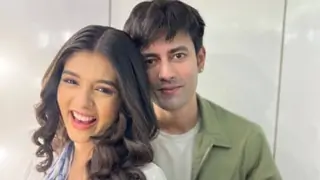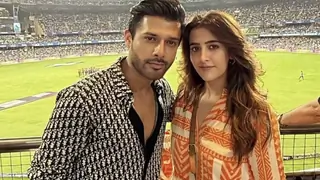Nava Rasas and Proverbs in Thyagaraja compositions
Emotions: To justify his being hailed as one of the foremost poets of his time, Thyagaraja Swami has brilliantly captured all rasas in his compositions. Many people think that studying Swami's kritis means only listening to long faced and serious aphorisms and homilies. Few know that he has used Sringara (Romance), Soka (Sorrow), Saantha (Tranquil, Peace), and Haasya (Humor)with equal felicity.
Before him and indeed even after his time, Mukhari was used only for the sokha rasa; but Swami proved that this need not be so, by using Mukhari to produce Haasya or humor in the kriti, Chinthisthunaade Yamudu. The description of the dowwarika in the music drama, Prahlada Bhakthi Vijayam, is full of hasya. In the kriti, "Vasudevayani Vedalani" (Kalyani), while describing the entry of the dowarika, he says "Mati Matikini Meesamu duvvi, manmatha roopudu thanani krovvi, dati dati paduchuna" is hilarious. Translated, it shows the ridiculuous behavior of the Dwarapalaka. He is walking here and there, twirling his moustache, posing as if he is Manmata (the God of Love and Beauty), jumping here and there and talking and laughing to himself posing like a handsome guy.
One of the scholars studying the Nowka charithram, responding to the criticism of Thyagaraja by some purists about the excessively sringara rasa ra in this drama, says that Sri Swami has walked the razor edge in keeping strictly in ethical and moral values and his srungara rasa. Unlike Jayadeva, Thyagaraja did not step outside the canons of decency. Whatever the rasa employed, the ultimate objective is bakthi and rasas have been employed only to emphasis the need for Bhakthi.
Proverbs: Thyagaraja Swami also uses a number of proverbs in his compositions to emphasize the underlying meaning in his compositions. Here are two examples:
1. To test a pot of rice in order to find out if it is well cooked, he cites the familiar proverb in Tamil - "Oru paanai sothukku oru soru padham" - in the Mohanam kriti "Maati Maatiki". To know my sincerity, Rama, do you need me to plead again and again? Is not one sincere pleading adequate? Do experienced individuals test every rice before finding it is cooked? How many times do I need to plead to you before you would bless me?
2. "Rock the cradle and at the same time pinch the baby." In the Atana kriti, "Atla Baluguthu", he says, "Atla baluguthu, nitla baluguthu" "Thotla narbagula Noodhuvu mari mari Thosi natulu killudhuvu Srirama". You will talk one way and then you will talk the other way. What can I do? You will rock the cradle to make the child sleep and then you will also stealthily pinch the kid." These lyrics are not only examples of the humor employed by Thyagaraja Swami but also the utter devotion, bhakthi and the personal oneness that shows with his deity, Sri Rama.
3. "In an attempt to make an idol of Ganesha, we end up making the figure of a monkey." In the Evarito ne delpudu" (Manavagthi", Thyagaraja Swami says, "Gananadhu Jeya Goraka kaduva narudai dheeraka"; I am constantly doing bhajana in your name and yet I am turning out to be not saved and am ending up as something else. Rama, won't you save me?"
These are a few example of many such proverbs that Thyagaraja Swami uses in his kriti to bring forth his true emotions and purpose behind a composition.





















